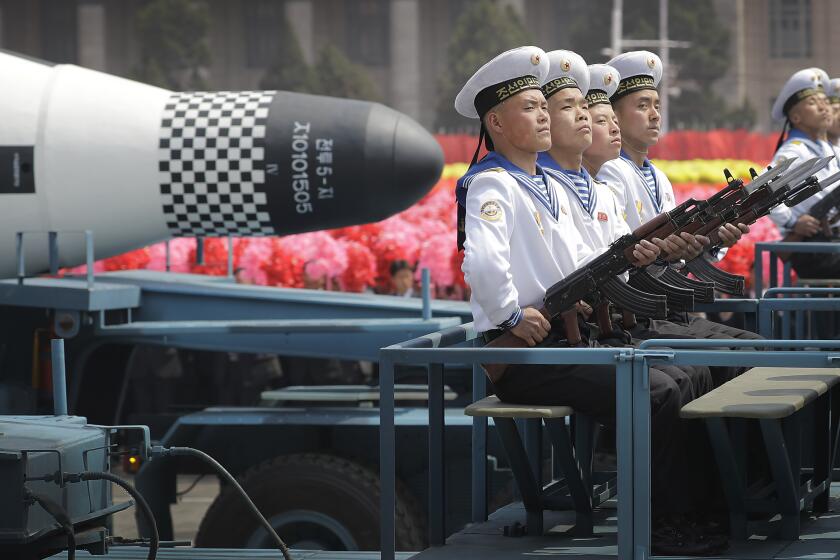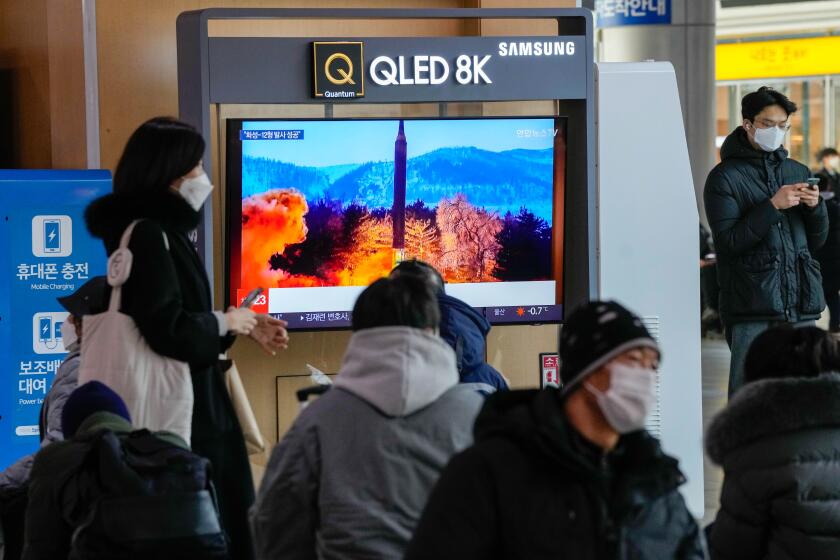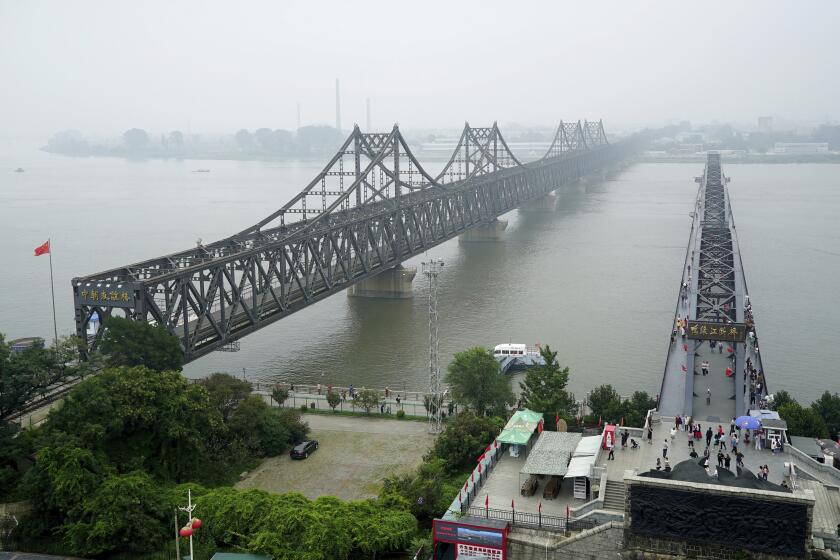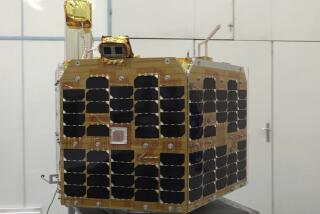North Korean missile explodes in midair in failed launch, the South says
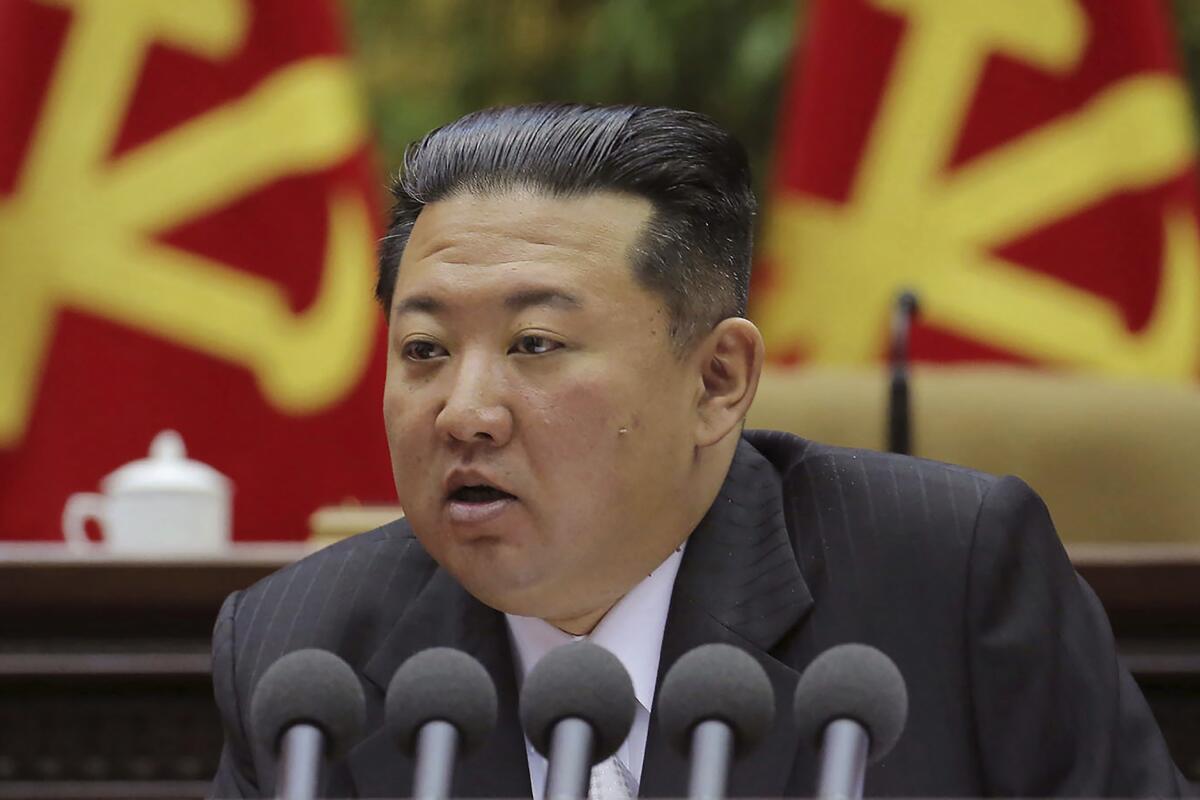
SEOUL — A North Korean missile fired from its capital region exploded soon after liftoff in an apparent failed weapons launch Wednesday, South Korea’s military said, amid speculation that the North is preparing to launch its longest-range missile in its most significant provocation in years.
Details of the missile explosion weren’t immediately known. But the launch, the 10th of its kind this year, shows that Pyongyang is determined to press ahead with modernizing its weapons arsenal and pressuring its rivals into making concessions amid dormant denuclearization talks.
The missile blew up while it was flying at an altitude of less than 12.4 miles, a South Korean military official said on condition of anonymity, because he wasn’t publicly authorized to speak to media on the issue. He said the cause of the explosion wasn’t known.
South Korea’s Joint Chiefs of Staff earlier said that the launch was made from the Pyongyang region around 9:30 a.m. local time but gave no other details.
Lee Choon Geun, an honorary research fellow at South Korea’s Science and Technology Policy Institute, said the missile likely exploded less than a minute after its launch. He said if the missile’s toxic fuels fell on civilian residential areas in North Korea, they would likely cause a major health impact. There was no immediate report of such damage.
The U.S. Indo-Pacific Command later said that North Korea had fired a ballistic missile but didn’t specify whether it was a failed launch. A command statement said the launch didn’t pose an immediate threat to U.S. territory and its allies, but called on North Korea to refrain from further destabilizing acts.
The White House plans to impose additional sanctions on North Korea for two recent ballistic missile tests that it says were efforts to test its ICBM capabilities.
Experts say past failures have nonetheless moved North Korea closer to its goal of acquiring a viable nuclear arsenal that could threaten the U.S. homeland. Of eight Musudan intermediate-range missile tests in 2016, only one of those launches was seen by outside analysts as successful, which led to debates of whether North Korea’s path toward ICBMs had been cut off.
However, the North in 2017 flew more powerful intermediate-range missiles over Japan and conducted three successful test-flights of ICBMs that demonstrated a potential range to strike deep into the U.S. mainland.
North Korea’s successful satellite launches in 2012 and 2016 — which were viewed by the United Nations as disguised tests of its long-range missile technology — also followed repeated failures.
The U.S. and South Korean militaries said last week that North Korea had tested an ICBM system in two recent launches, referring to the developmental Hwasong-17 missile, the North’s biggest weapon, which it unveiled during a military parade in October 2020.
The test launch is North Korea’s most significant in five years as it tries to pile more pressure on the Biden administration for sanctions relief.
In the two recent launches, on Feb. 27 and March 5, the North Korean missiles flew medium-range distances, and experts have said North Korea could eventually conduct a full-range ICBM test.
It wasn’t clear if Wednesday’s launch also involved a Hwasong-17 system. If it was an attempt for a full-range Hwasong-17 launch, North Korean leader Kim Jong Un would likely have been at the launch site to observe it.
Earlier Wednesday, North Korea’s state news agency released photos of a smiling Kim, clad in a long black leather coat, visiting a towering apartment complex under construction on the outskirts of Pyongyang. The news agency didn’t say when Kim was there, but it typically reports on his public activities one or two days after they occur.
After its two previous launches, North Korea said it had tested cameras and other systems for a spy satellite and released what it said were photos taken from space during one of the two tests. But it didn’t confirm what rocket or missile it launched.
North Korea is showing signs of easing its stringent border controls in hopes of boosting its ailing economy.
Observers say North Korea aims to boost its ICBM capability while trying to place its first functioning spy satellite into orbit. Kim has vowed to acquire an improved ICBM and a spy satellite among an array of sophisticated weapons systems he says his country needs to cope with what he calls American hostility.
If North Korea conducts a new ICBM launch, it would be its highest-profile weapons test since its third and most recent ICBM launch in November 2017.
Other North Korean missiles tested this year were mostly shorter-range, nuclear-capable weapons which place South Korea and Japan, both key U.S. allies, within striking distance. In January alone, North Korea carried out seven rounds of missile tests, a record number of monthly tests since Kim took power in late 2011.
More to Read
Sign up for Essential California
The most important California stories and recommendations in your inbox every morning.
You may occasionally receive promotional content from the Los Angeles Times.
